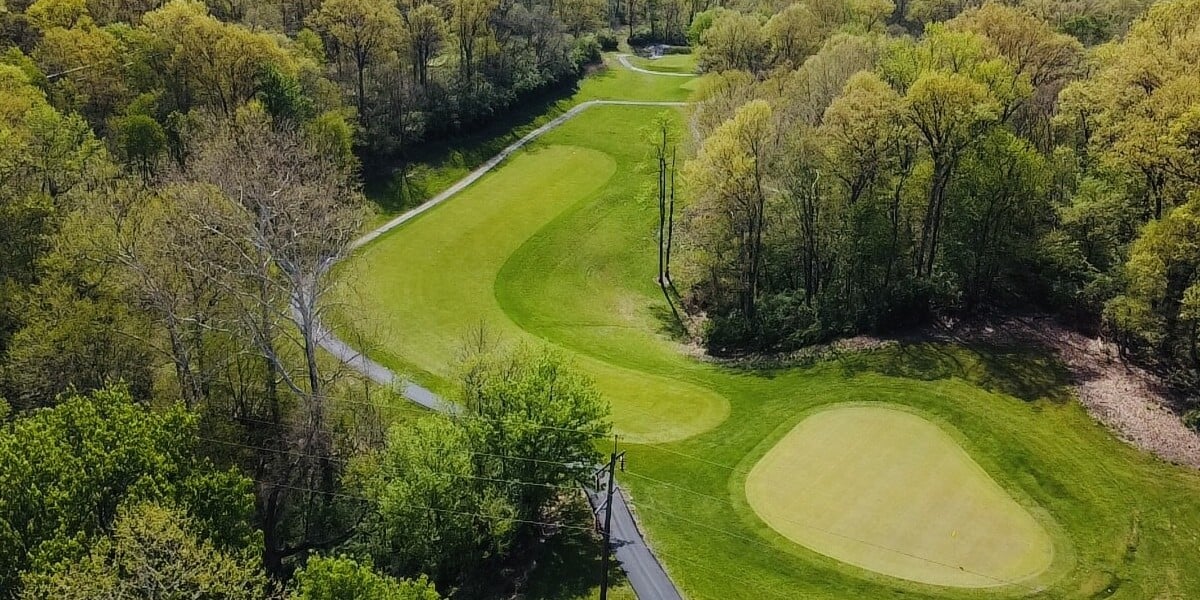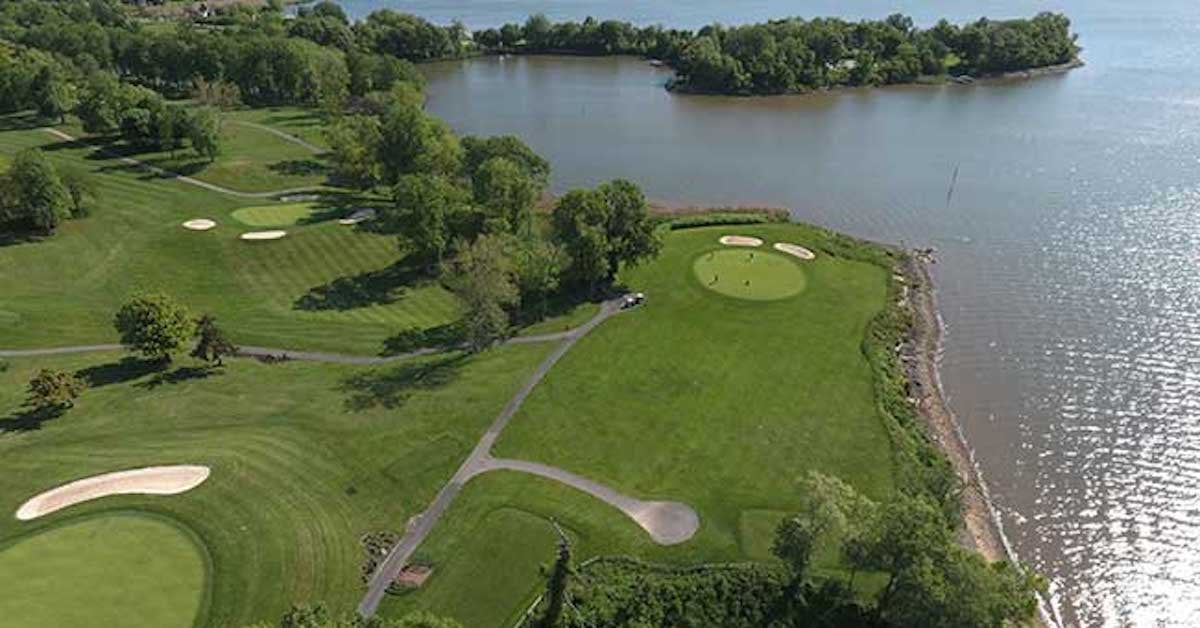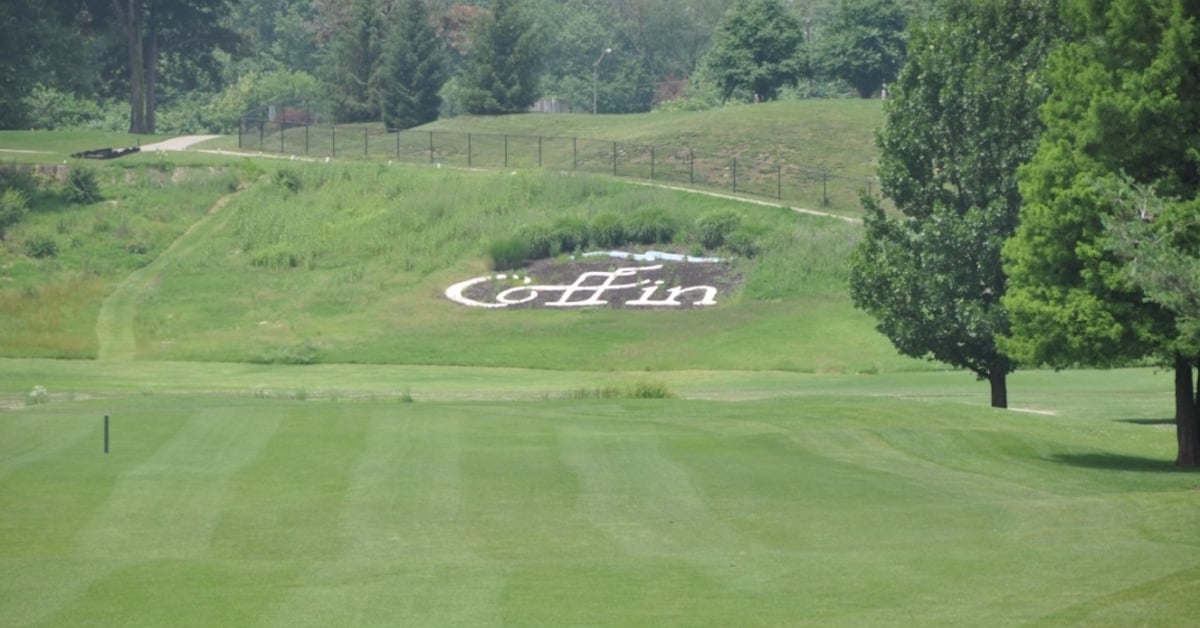Swan Point is a Natural Choice for Great Golf, Beautiful Scenery
For untouched scenic beauty, few courses — public or private — can hope to compete against Swan Point Yacht & Country Club. It’s here, nestled along the banks of the Potomac River in Issue, MD, that architect Bob Cupp designed a layout that blends effortlessly with its dramatic setting of marshland and tall pines. It is one of the Mid-Atlantic’s best examples of how nature and golf can peacefully coexist.
In the late 1980s, Cupp was charged with the responsibility of turning a quaint, nine-hole loop into a championship-caliber, 18-hole signature course. The world renowned designer and consultant to Augusta National delivered much more… a world-class Southern Maryland masterpiece. Swan Point has a distinctive coastal Carolina’s feel with grassy mounds and retention bunkers, tree-lined fairways, and water and wetlands coming into play on 12 holes. Adding to the challenge and aesthetics are elevated, multi-tiered greens that place a premium on accuracy and a soft touch.
Swan Point has a distinctive coastal Carolina’s feel with grassy mounds and retention bunkers, tree-lined fairways, and water and wetlands coming into play on 12 holes.
Swan Point is part of a 904-acre upscale waterfront community. And while such an idealistic setting is perfect for deer, fox, herons, osprey and bald eagles, it is not nearly as hospitable for golfers who routinely flail their tee shots left and right. It can be difficult. But it can also be very rewarding. To card a respectable score, each shot needs to be approached with a specific objective in mind. The layout will not tolerate bone-headed decisions off the tee or second-guessed approach shots. In short, Swan Point will test everything you learned in Course Management 101 and 102 (graduate classes are recommended but not required).
Expect your first pop quiz at the second hole, a 445-yard par 4. It presents a sharp dogleg left played entirely around wetlands. The tee shot must carry a little over 200 yards to cut the corner, or shorter knockers can avoid the marsh by aiming more right. Watch out for water on the approach, too — hit it left or long and you’ll be fishing in your bag for another ball.
The par-5, 508-yard No. 4 is a classic risk-reward hole. A DeChambeau-esque drive that skirts the lateral water hazard on the left can put you in position to get home in two. The safer and more sane option is to place your second shot inside of 150 yards and attack the island green with a high-lofted, angled approach over water.
A straight-and-true tee shot followed by an equally impressive fairway wood or long iron would typically set up an easy approach to most par 5s. Not at the 575-yard No. 6. The small green, which oddly resembles an octopus, is elevated about 20 feet and is guarded by four deep sand traps. Play the hole once and you’ll understand why its the toughest three-shot test on the course.
Par 3s traditionally rank low on the handicap totem pole. Then again, most par 3s present a visible target. Not the 171-yard No. 11. The small green (only the top-half of the flagstick can be seen) is surrounded on three sides by water and marsh. A hidden bulk-headed bunker also runs around the green, saving shots that are struck a little too thin, long or left. There’s a small bailout area to the right, but finding it is more luck than skill.
Fear of the unknown or unseen strikes again at No. 13, a 395-yard par 4. The tee shot is played over wetlands to a blind fairway that moves to the right. The yardage book suggests you use the mounds on the left as a reference point off the tee. It’s good advice — if you play center in the NBA or carry stilts in your golf bag. A better line is just left of the trees on the right.
For many golfers, one good hole is all it takes to bring them back for another round. Swan Point goes out of its way to make sure players end with a par or two. Holes 16-18 are among the easiest on the course, and operate in a more park-like setting.
A central precept of golf architecture is that, when possible, land should dictate design. There is nothing artificial about Swan Point. Given its setting and natural hazards, Cupp could have easily crafted a layout deemed unfair by the rank and file. But he didn’t. If you choose the right set of tees and don’t let your mind wander too far off course while admiring the scenery, a surprisingly decent score can be had.
One final note. Swan Point is a little off the beaten path, just south of Waldorf, MD, about nine miles off Rt. 301 and near the MD/VA state line. The location works in its favor, giving it a getaway or destination feeling while being easily accessible to folks who live and play in Northern VA and Baltimore. It routinely ranks as a favorite and must-play for many TeeTime Golf Pass members, who can take advantage of some really good weekday, weekend and senior golfer specials included in the passbook.
COURSE LOCATION:
Swan Point Golf Club
14985 Persimmon Ct, Issue, MD 20645
Phone: 301-259-0047
Website: swanpointgolf.com
Email: [email protected]






